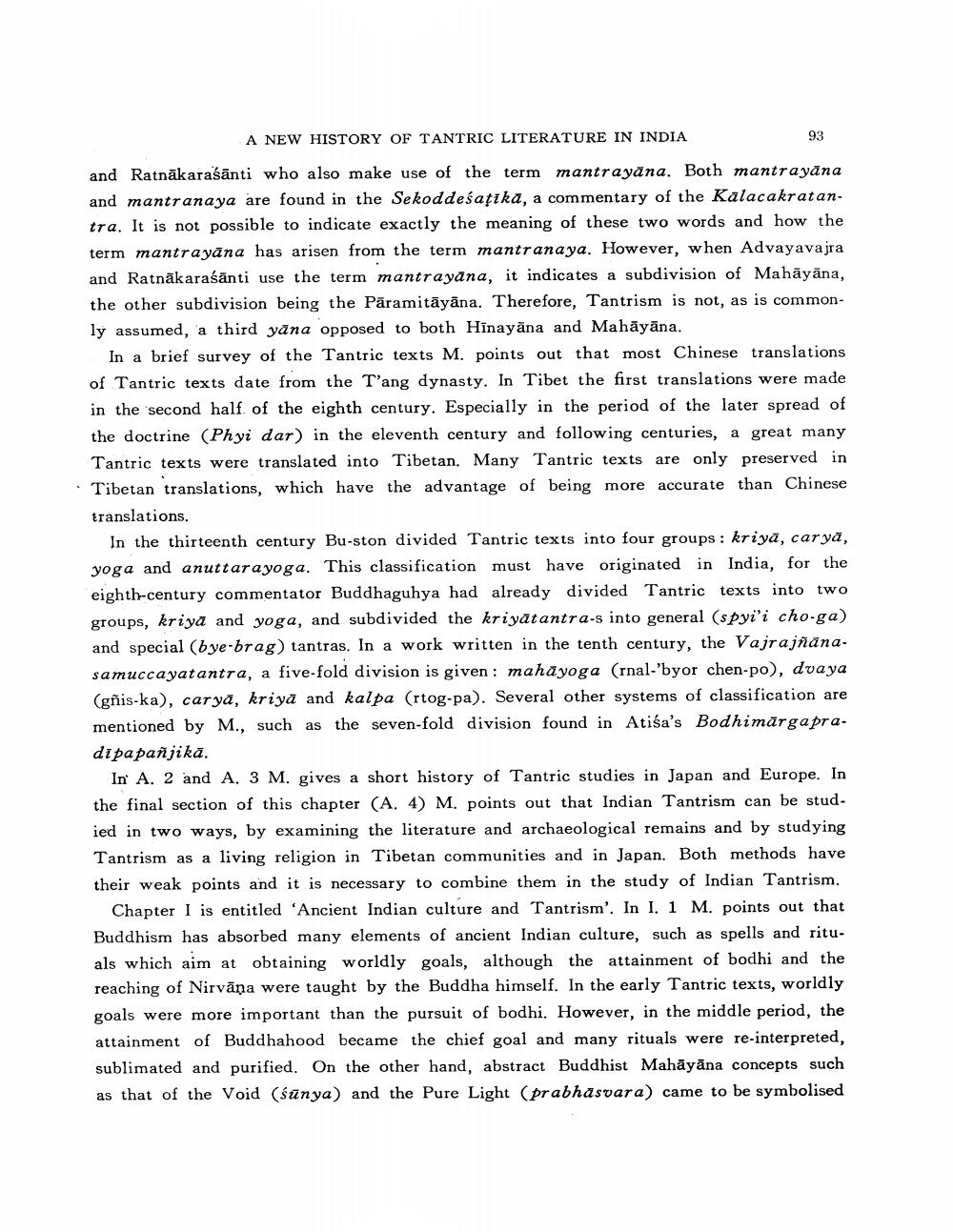Book Title: New History Of Tantric Lieterature In India Author(s): J W De Jong Publisher: J W De Jong View full book textPage 3
________________ A NEW HISTORY OF TANTRIC LITERATURE IN INDIA 93 and Ratnākaraśānti who also make use of the term mantrayāna. Both mantrayana and mantranaya are found in the Sekoddeśaţika, a commentary of the Kalacakratantra. It is not possible to indicate exactly the meaning of these two words and how the term mantrayāna has arisen from the term mantranaya. However, when Advayavajra and Ratnākaraśānti use the term mantrayāna, it indicates a subdivision of Mahāyāna, the other subdivision being the Pāramitāyāna. Therefore, Tantrism is not, as is commonly assumed, a third yana opposed to both Hinayāna and Mahāyāna. In a brief survey of the Tantric texts M. points out that most Chinese translations of Tantric texts date from the T'ang dynasty. In Tibet the first translations were made in the second half of the eighth century. Especially in the period of the later spread of the doctrine (Phyi dar) in the eleventh century and following centuries, a great many Tantric texts were translated into Tibetan. Many Tantric texts are only preserved in Tibetan translations, which have the advantage of being more accurate than Chinese translations. In the thirteenth century Bu-ston divided Tantric texts into four groups : kriyā, caryā, yoga and anuttarayoga. This classification must have originated in India, for the eighth-century commentator Buddhaguhya had already divided Tantric texts into two groups, kriya and yoga, and subdivided the kriyatantra-s into general (spyi'i cho-ga) and special (bye-brag) tantras. In a work written in the tenth century, the Vajrajñanasamuccayatantra, a five-fold division is given : mahāyoga (rnal-'byor chen-po), dvaya (gñis-ka), carya, kriya and kalpa (rtog-pa). Several other systems of classification are mentioned by M., such as the seven-fold division found in Atiśa's Bodhimärgapradipapañjikā. In A. 2 and A. 3 M. gives a short history of Tantric studies in Japan and Europe. In the final section of this chapter (A. 4) M. points out that Indian Tantrism can be stud. ied in two ways, by examining the literature and archaeological remains and by studying Tantrism as a living religion in Tibetan communities and in Japan. Both methods have their weak points and it is necessary to combine them in the study of Indian Tantrism. Chapter 1 is entitled 'Ancient Indian culture and Tantrism'. In I. 1 M. points out that Buddhism has absorbed many elements of ancient Indian culture, such as spells and rituals which aim at obtaining worldly goals, although the attainment of bodhi and the reaching of Nirvāṇa were taught by the Buddha himself. In the early Tantric texts, worldly goals were more important than the pursuit of bodhi. However, in the middle period, the attainment of Buddhahood became the chief goal and many rituals were re-interpreted, sublimated and purified. On the other hand, abstract Buddhist Mahāyāna concepts such as that of the Void (śünya) and the Pure Light (prabhāsvara) came to be symbolisedPage Navigation
1 2 3 4 5 6 7 8 9 10 11 12 13 14 15 16 17 18 19 20 21 22 23
